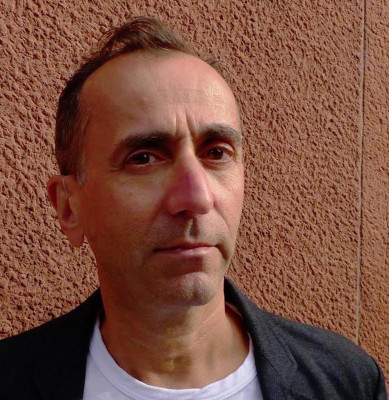
Racial conversations have historically been present in the United States since the founding of our country, yet they have recently garnered more traction as a result of social media.
Specifically, the mantra “Black Lives Matter” was founded after the acquittal of George Zimmerman in 2013 and the death of Michael Brown in August of 2014. The Black Lives Matter coalition has arguably become one of the most prominent racial groups. Both the group and movement have grown exponentially as communities begin to uncover, document and share racial injustices occurring around them.
The Harvard Art Museums hosted a public lecture and forum titled “The Visual Commons: #BlackLivesMatter” Thursday, featuring Nicholas Mirzoeff, a professor at New York University. Mirzoeff drew a large crowd diverse in race, gender and age.
During the lecture, Mirzoeff analyzed the ever-growing Black Lives Matter movement in regard to its “visual commons.” He defined the visual commons as, “where we practice freedom, see each other, invent each other and create a common space between us that cannot be owned.”
Many of Thursday’s attendees came looking to learn something new. Harvard University freshman Ian Askew said the lecture’s title drew him to the event.
“I saw an event at the Art Museums that had #BlackLivesMatter in the title and I thought, ‘Okay, the museum’s getting involved,’” Askew said. “I looked at the lecturer’s work and … I was completely confused by it and I had no sense of what it was by reading the description. So it was those factors that led me [to the lecture], because I wanted to first understand [Mirzoeff’s] field of study and see what was going on at the Art Museums.”
The lecture tackled many topics including the civil rights movement and the 1968 Resurrection City encampment in addition to the Black Lives Matter movement. Mirzoeff said the visual commons has been an ongoing communal strategy to address pressing issues.
Mirzoeff also discussed the Black Lives Matter ideology — that unless black people are free, no one is free — which silenced the audience as they gazed at a photograph of a sign which read, “When we breathe, we breathe together.”
The images Mirzoeff showed during his lecture embody the beauty of the visual commons because of the intersectionality of art and social change. The images elicit a deep emotional response and allow individuals to question the artistic aspects of both the movement and society itself.
Mirzoeff disproved the common misconception that “Hands Up, Don’t Shoot” originated from Michael Brown’s encounter with Officer Darren Wilson. However, he said it “was not a simple recreation of the scene at the murder,” but developed over time. Protestors first silently held their hands up, then the next day they held their hands up and yelled “Don’t Shoot,” which evolved into “Please don’t shoot, my hands are up,” until “Hands Up, Don’t Shoot” finally emerged, Mirzoeff said.
Sophia Feng, a member of the Harvard Art Museums Student Board and a junior at Harvard, offered her thoughts on the Black Lives Matter movement as a whole.
“I would say that there’s been this really long history in America, especially where certain African-Americans have been discriminated against and they feel they’re underrepresented and under-voiced,” she said. “Now, people are more aware and have confidence … [and] have the ability to voice these concerns and it’s a really important movement we need to be more involved and more active about.”
The Black Lives Matter movement directly and indirectly affects a vast variety of individuals within the United States. Feng said that Harvard students such as herself are being active and vocal to rally behind the University of Missouri during this time of racial conflict to make a change.
Jessica Martinez, director of academic and public programs at the Harvard Art Museums, expressed her hopes for a positive outcome from the lecture.
“I think a program like this has the potential of [fostering a community],” she said. “It would be nice if people went to this talk and then spent some time in the galleries and their conversations question some of the topics, or they think differently.”

















































































































